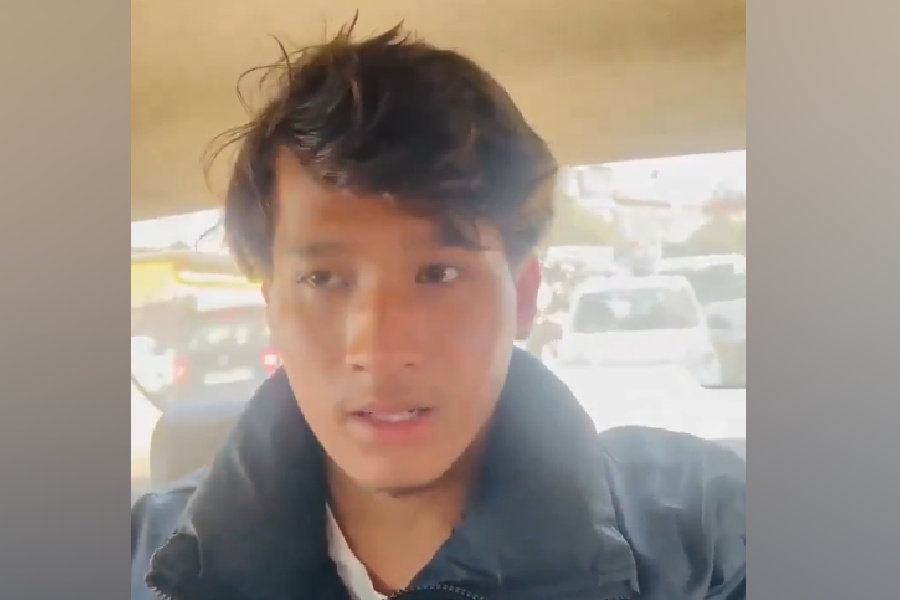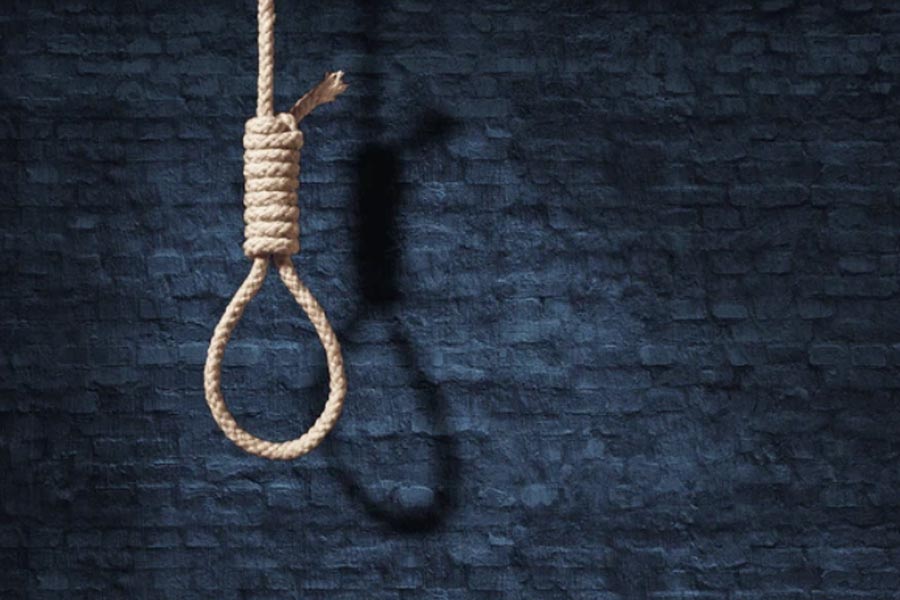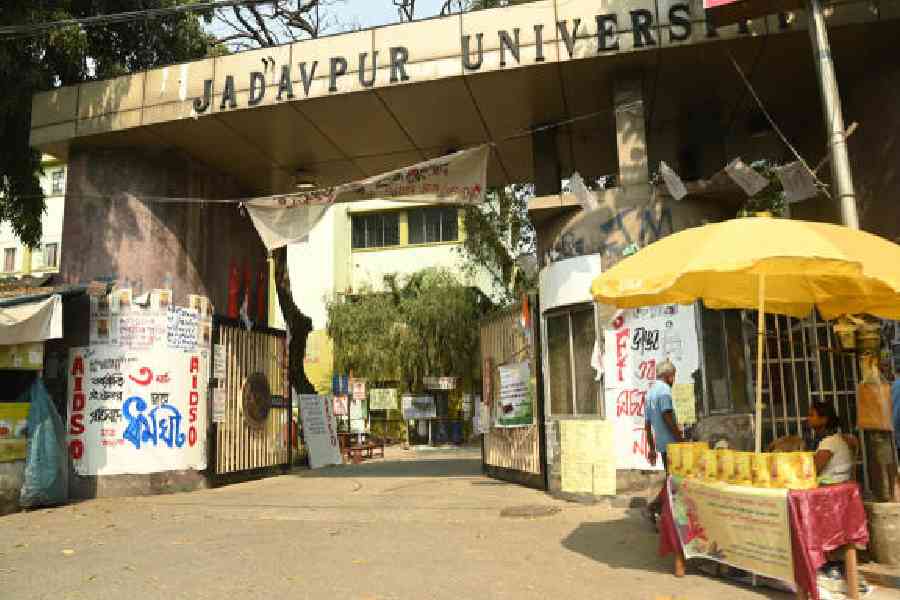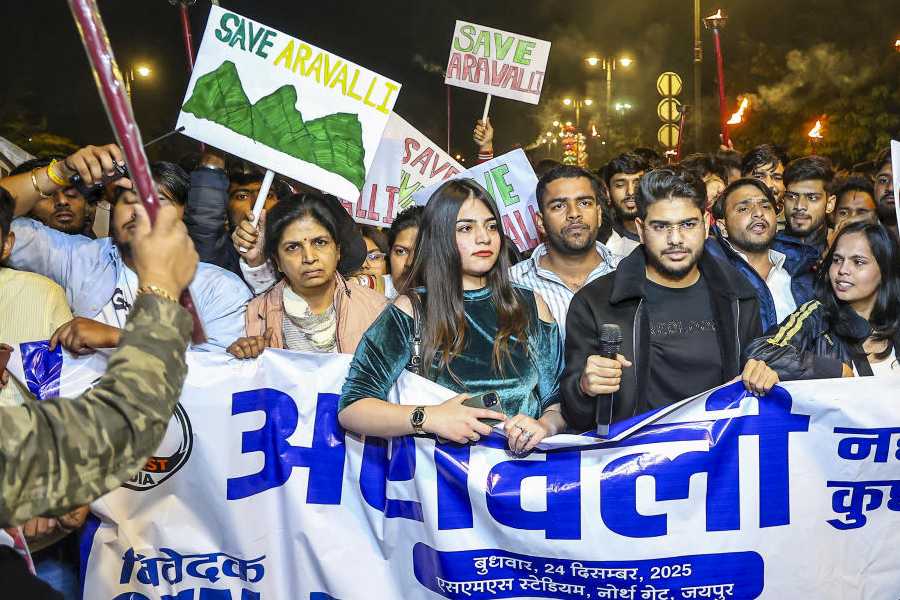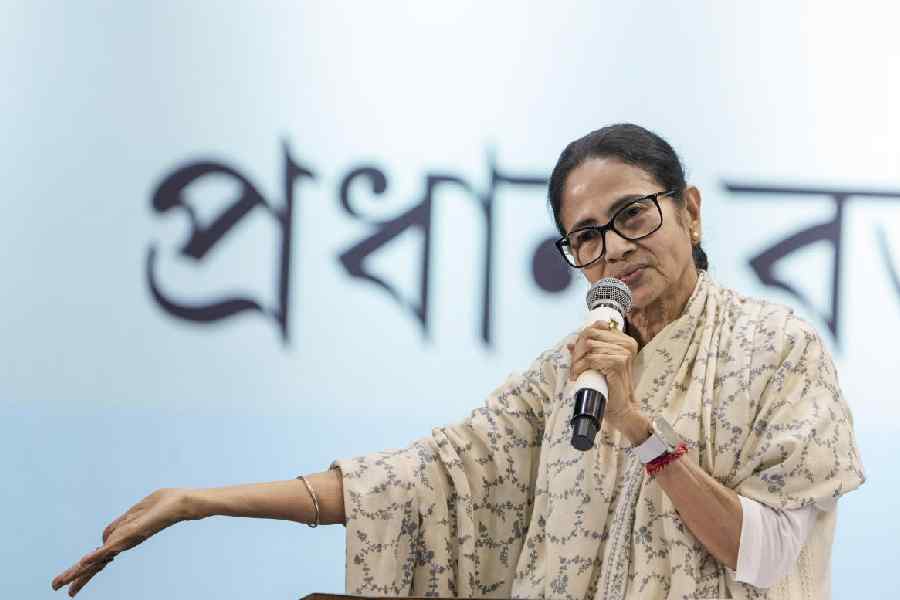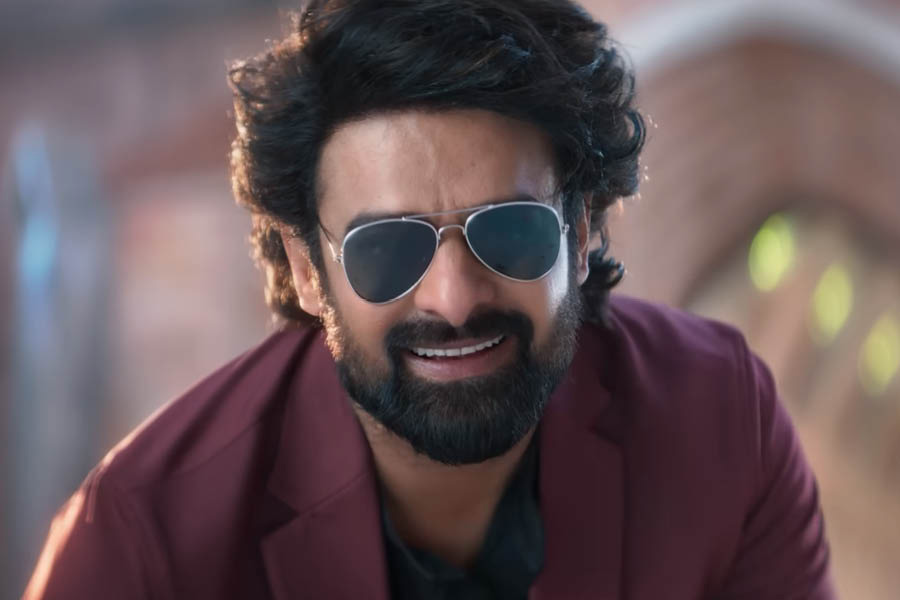 |
Alipta Jena talks to the producer, director, music director and cameraman of Kaafiron ki Namaaz, which has been shot partially in Kashmir and mostly at Jyoti Chitraban Studio, and explores what makes it a film worth watching out for
An army man. A writer. A bandwallah. They talk chips and chocolates, sing fairy tales and play dumb charades — the drama eventually turns into a thriller.
The central theme of Kaafiron ki Namaaz is confessions. The film’s story unfolds over the course of one night when a writer arrives in Srinagar to interview an army man. Another character is introduced, a bandwallah. These three diverse faces of society meet and confess their darkest secrets to each other that night, which happens to be Christmas-eve.
Producer Bhargav Saikia, who was born in Biswanath Chariali in Sonitpur district of Assam, said Ram Ramesh Sharma, writer and director of Kaafiron ki Namaaz, narrated the film’s concept to him at the beginning of 2011 when they were both students at Whistling Woods International, Subhash Ghai’s film school in Mumbai. The film is due for release in December.
“I was intrigued and decided to begin work on the film immediately,” he added.
Saikia launched his independent film company, Lorien Motion Pictures, when he was still a student at Whistling Woods.
 |
He said they had recently shot a few sequences of the film in Kashmir. “We were there for almost two weeks and shot in picturesque locations like Wular Lake, Gulmarg, Pahalgam and Sonmarg. Thanks to Sajad Mir, our superb line producer in Kashmir, we even managed to shoot in several locations in Srinagar where filming is usually not permitted. In July, we shot at Jyoti Chitraban Film Studio. We are planning to shoot parts of the film in Calcutta and Varanasi.”
He said what fascinated them about Kashmir was the way the place added tremendous depth to the narrative. “Kashmir is not merely a backdrop but an important character in the film,” he said.
“Another character in the film I am particularly fond of is the Radio Jockey. He is not seen in any part of the film. Only his voice is heard through the radio. It’s a rainy night and he is heard reading out letters of confessions of his listeners,” Saikia added.
 |
| From top: Stills from Yeh Raat Monalisa and Usha Uthup during the recording for the film |
Speaking of the characters in the film, Ramesh said in the army man and writer he had rebellious and conflicting layers. “I wanted to give a third character a spiritual tone. Spiritual but not necessarily religious and only musicians have this kind of purity. I made this third character a bandwallah who also had a tea stall.”
On why they chose Kashmir to shoot their film, he said, “I thought for a month. Conversations between such ironical characters requires some sort of an environment. A place full of irony, questions, promises and heartbreaks. Kashmir was the only place, which came to my mind. Kashmir as a location became my latent character”.
Ramesh, who has penned the lyrics, said many portions of the film were reflections of his personal experiences, which he had meticulously integrated into the screenplay. “I always think conversations are colourful — more colourful than a rainbow but certainly less picturesque than our childhood photographs. Sometimes intimate, sometime aloof, sometimes like literature,” he said lyrically.
He said the film has many moments when the characters find themselves juggling between intimacy and ego. “Confessions don’t need priests. They need an occasion and motivation. We are giving you both.”
Ramesh, who is on his maiden visit to Guwahati, said was a wonderful experience. “People are warm, friendly and very helpful. The facilities at Jyoti Chitraban Film studio are excellent. I couldn’t have asked for more.”
Music director Advait Nemlekar, who has come up with refreshing and mature compositions, said, “Kaafiron ki Namaaz is one film where I was given ample of time to venture into different genres of music.”
The first song, Sawalon ki godh main, has been sung by Najiim Arshad, who has training in Carnatic classical music. “Najiim was extremely enthusiastic and flew down all the way from Kerala to record with us,” said Nemlekar.
The second song, Jhalkiyan, is a semi-classical song, which required two unique voices that would compliment each other. “Finally we settled on Khsitij Tarey, known for hits like Maula mere and Tose naina lage, and Javed Ali. We used a wide variety of instruments such as sarod, sitar, tabla, dholak and ghungroo,” he added.
“I always wanted to compose a jazz number and when Ram recited the lyrics of Yeh raat Monalisa, my dream finally came true,” Nemlekar said enthusiastically.
“We approached Usha Uthup and recorded the song in her studio in Calcutta. The song was completely western and we incorporated the clarinet and saxophone to bring out the dark humour in it,” he added.
“Taali was a special song requested by the director and producer after they added a new character to the film. Sukki Sir (Sukhwinder Singh) loved the composition and it was great fun recording with him. He has contributed so many things to the song and really taken it to another level. We have tried to incorporate a different instrument in every song to bring out the right mood and flavour,” he said.
Cameraman Vasanth said shooting the film was a different experience from every aspect and shooting in Kashmir was an amazing experience.
“It was actually an adventure. We faced a lot of issues technically and physically because of the sub-zero temperature. We captured most of Kashmir, not just the scenic beauty. We explored the Kashmiri lifestyle and they were mostly candid shots. We also had a special sequence where we travelled to 14,000 feet for a specific shot,” he said.
At Jyoti Chitraban, he said, the entire team, from the focus puller to the light guys, everyone adapted to his work style quickly.


